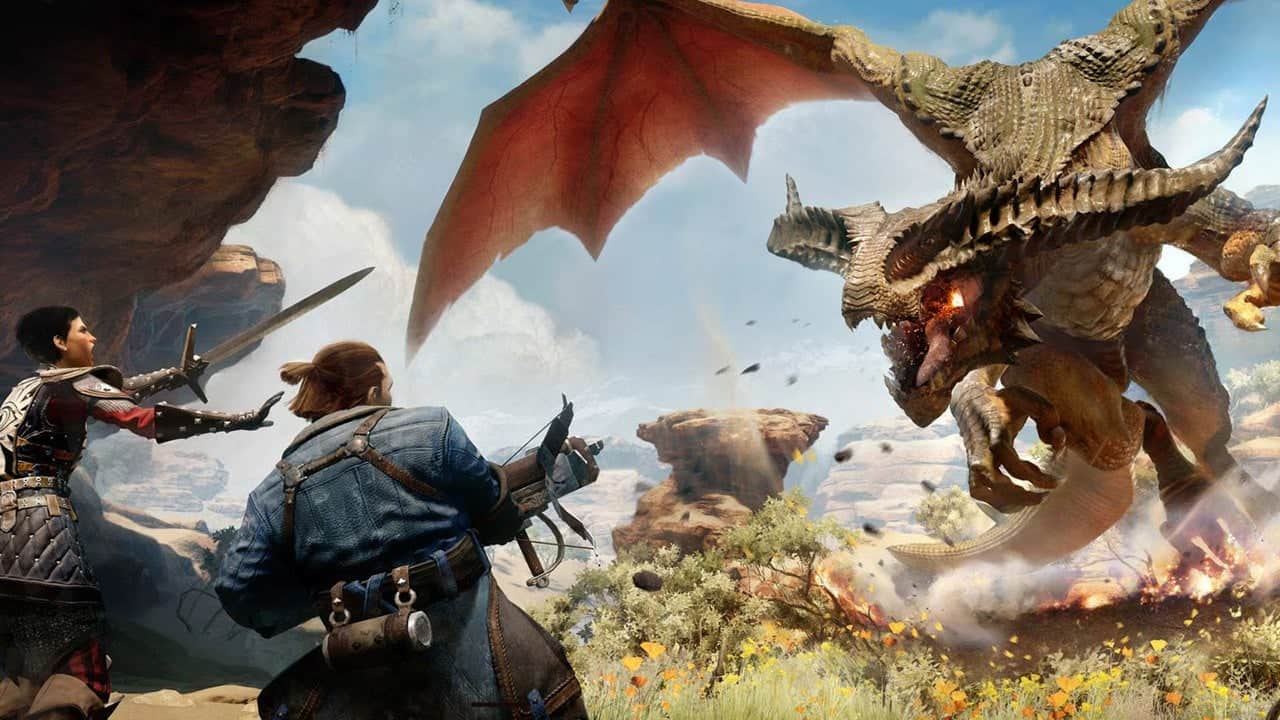Dragon Age is developer BioWare’s fantasy RPG series that is, in some ways, a spiritual successor to the studio’s early games, particularly Baldur’s Gate. Despite the first game’s development preceeding the Mass Effect series’ origins by a year, many view the Dragon Age series as the fantasy offshoot of BioWare’s sci-fi RPG trilogy. The games share several mechanics, including a flexible morality system and branching dialogue trees. These features have long been staples of BioWare’s work, with other titles like Star Wars: Knights of the Old Republic and Jade Empire using the same systems.
In addition to its Dungeons & Dragons inspirations, the series draws heavy influence from fantasy novels. Primarily, the developers cite George R. R. Martin and A Song of Ice and Fire as major inspiration for the series and its world of Thedas. Outside the three mainline titles in the franchise there are several web browser Flash games and a mobile title that count themselves as part of the series. However, all except one of these have had their servers shut down and are no longer playable. There is currently a fourth mainline game in development, Dragon Age Dreadwolf, though its release date is up in the air.
Dragon Age: Origins (2009)
- Released for PC, PlayStation 3, Xbox 360, and Mac OS X
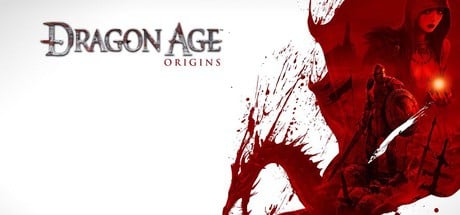
The first game in the series, Dragon Age: Origins, arrived in November 2009 roughly a year after the release of Mass Effect. The title was able to capitalize on the unprecedented success and acclaim of the first entry in BioWare’s hugely successful sci-fi RPG franchise and quickly sell more than 3 million copies over the 2009 holiday season. Outside of its commercial success, the game was also viewed as a triumph by critics and a return to form for developer BioWare.
Origins establishes both the world of the series as well as several gameplay mechanics that would become series staples. Players are introduced to the realm of Thedas, as well as its many factions, races, and conflicts. Assuming the role of a Grey Warden (an ancient order sworn to protect Thedas), it’s up to you and your companions to push back the Blight and quell the Darkspawn invasion. And, in typical RPG fashion, this is accomplished through both combat and conversation.
Dragon Age Journeys (2009)
- Web browser
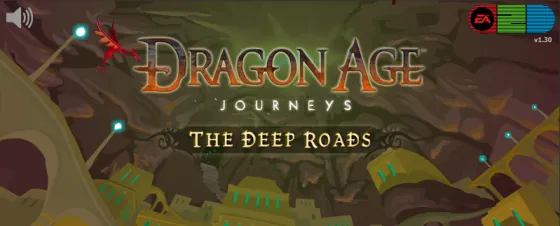
Journeys is a flash-based web browser game releasing in 2009 as a tie-in title with Dragon Age: Origins. The intent was for the game to feature three distinct chapters that connect to Origins, though this never came to fruition. Only one chapter of the game ever released out of the three planned, with the second and third chapters becoming cancelled.
Gameplay in Journeys is that of a grid-based tactical RPG. After creating a new character and assigning them a race and class, players guide them through turn-based tactical battles. You can have two companions in your party at any time and successful completion of battles awards achievements that unlock in-game items for Origins.
Dragon Age: Origins – Awakening (2010)
- Released for PC, PlayStation 3, Xbox 360, and Mac OS X
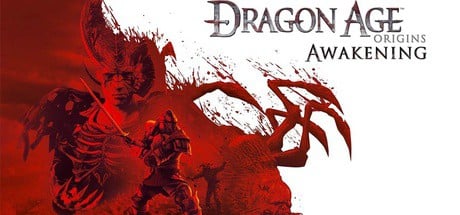
Awakening is a large standalone expansion to Origins in which players get to experience the aftermath of the main game’s story. Players have the option to either import their character from their Origins save or create a new one from scratch. In terms of gameplay additions, Awakening adds a new class specialization and plenty of new spells and abilities. Additionally, there are several new enemies introduced and the level cap is raised to 35 from Origins‘ 25.
Outside these additions, gameplay in Awakening is identical to that of Origins. Players still assume the role of a Grey Warden (either their character form Origins or a new Orlesian Warden Commander) and travel around Thedas recruiting companions. Once all 5 of the new characters have joined the player, the party ventures to one of two cities facing a Darkspawn invasion, with their choice impacting character relationships and the game’s ending.
Dragon Age II (2011)
- Released for PC, PlayStation 3, Xbox 360, and Mac OS X
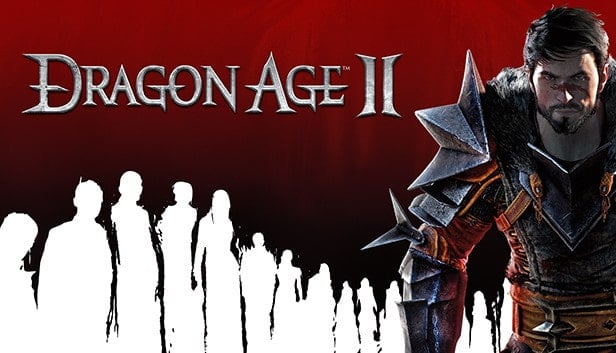
As the second mainline game in the series and direct sequel to Origins, Dragon Age II represents a massive departure from what came before. Developers at BioWare made it a point to address fan feedback about the first game during the sequel’s development, which led to several changes to the core gameplay in an attempt to make Dragon Age II more accessible. The largest and most impactful of these changes is a switch to full action-RPG combat over a more classic CRPG-style sysem.
Beyond the simplified combat, players also have less agency in their hero. Players all assume the role of Hawke, though their appearance and gender can be customized. Still, Dragon Age II jettisons several of the RPG customization options of the first game in favor of a more streamlined, action heavy experience. While some found these changes to be a nice deviation from Origins, others lamented the loss of what made the first game so great. Tellingly, BioWare brought Origins‘ RPG mechanics back in full-force for the next mainline Dragon Age game.
Dragon Age Legends (2011)
- Web browser
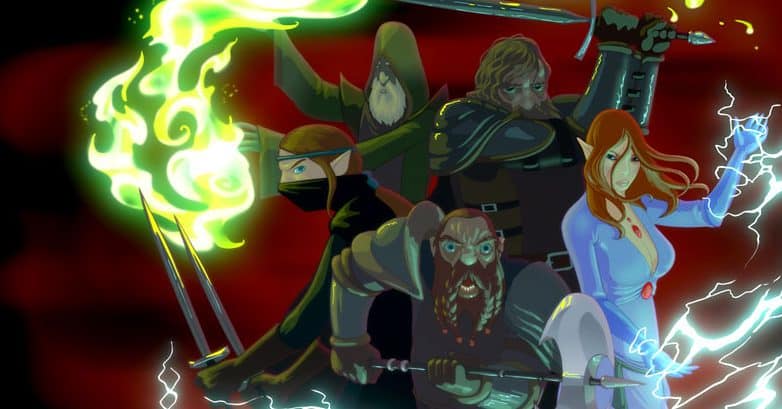
Legends is to Dragon Age II what Journeys was to Origins. Another Flash game for web browser, Legends is a tactical RPG that ties directly to Dragon Age II. Additionally, the title repeats many of the conventions of Journeys. As players progress through Legends and complete challenges, they unlock in-game rewards to use in Dragon Age II.
A hack-and-slash version of the game released in 2011, though this did not save the game from entering obscurity. The servers for Legends officially shut down in June 2012. Although the game is no longer playable online, it is possible to find the free-to-download offline version.
Heroes of Dragon Age (2013)
- Released for iOS and Android mobile devices
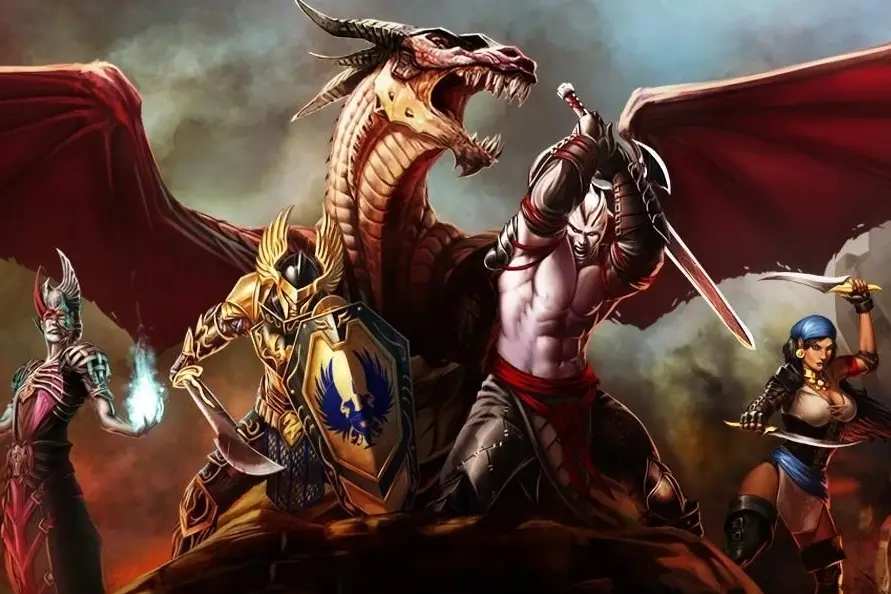
Heroes of Dragon Age is the one and only mobile title to come from the Dragon Age universe. Similar to other spin-off titles, Heroes is a squad-based strategy game. Players build a five-person party and ise it to battle foes in automatic encounters. The outcomes of these encounters depend on the characters used and their unique abilities.
Rather than introduce its own new storyline or additions to the series lore, Heroes uses “what-if?” scenarios featuring plot points and characters from the franchise. The title is free-to-play, though there are microtransactions that players can engage with for premium characters and more gameplay time. BioWare announced the sunset of the game’s servers late last year, with the game planning to shut down January 2024.
Dragon Age: The Last Court (2014)
- Web browser
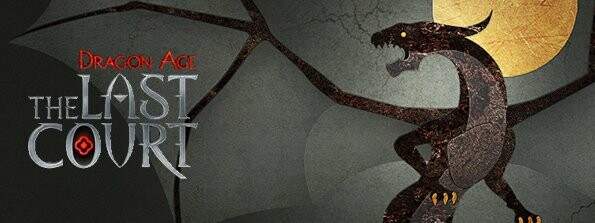
While The Last Court is yet another Dragon Age web browser game, it occupies a much different genre than the others. Instead of a turn-based tactics game or auto-battler, The Last Court is a resource-management card game. Players must draw and play cards while managing the state of the realm and meeting challenges.
Similar to other web browser Dragon Age games, the free-to-play title found success and a dedicated group of fans that unfrotunately could not prevent its shutting down. The title went offline in November 2020, though fans have preserved the game’s contents in hope of creating their own unofficial offline version.
Dragon Age: Inquisition (2014)
- Released for PC, PlayStation 3, PlayStation 4, Xbox 360, and Xbox One
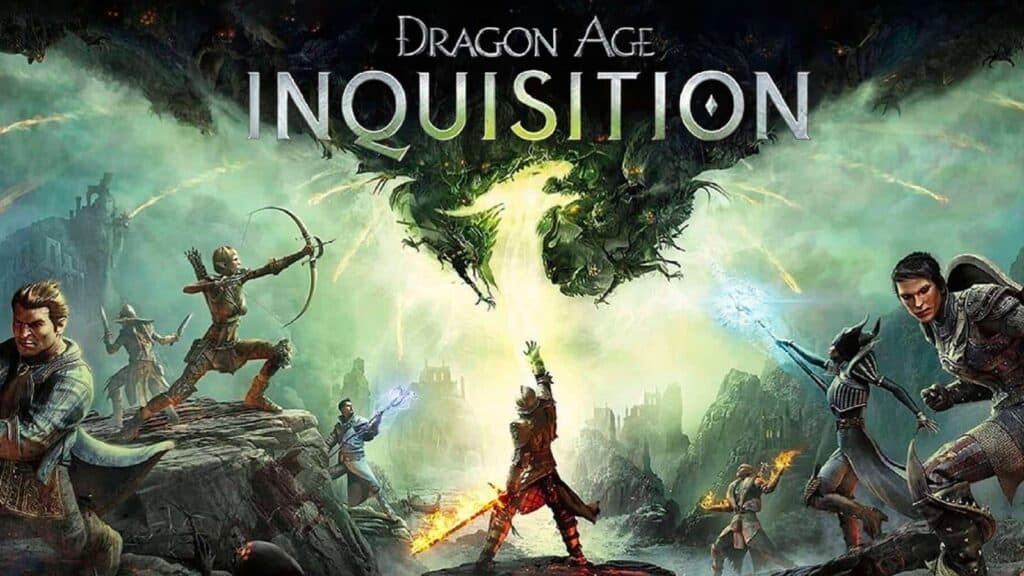
Not just the most recent game in the franchise, Dragon Age: Inquisition is also quite possibly the best. The title is a return-to-form of sorts for BioWare, correcting the missteps of Dragon Age II and reaffirming fan favor after the mixed reception to Mass Effect 3‘s conclusion. Inquisition sees players assume the role of the Inquisitor, the sole survivor of an event known as the Breach. This Breach is the cataclysmic event that occurred when the Veil separating the Fade from Thedas was weakened, resulting in a flood of Darkspawn. As the Inquisitor, it is up to the player to navigate friend and foe alike and use diplomacy and military tactics to stop Corypheus.
Gameplay in Inquisition is much more akin to Origins than Dragon Age II, with players beginning the game creating their Inquisitor and assigning them a race and class. Depending on which class players choose, they will need to diversify their party for success on the battlefield. Combat is not turn-based but instead built around auto behaviors that trigger based on character class and party composition. Once an encounter is initiated, players can also pause and zoom out for tactical decisions. The dialogue trees and morality systems from previous games return, and the player’s choices impact both the world around them and how their party members view them.
Reception for Inquisition vindicates BioWare’s design choices for the game, with critics and fans alike heaping praise on the title. In addition to holding an impressive 89 on review aggregate site Metacritic, the title has shipped over 6 million units worldwide. Inquisition has the distinction of being the most successful single game launch in BioWare’s history.
